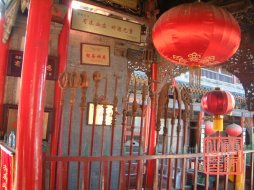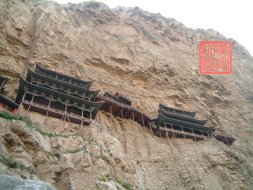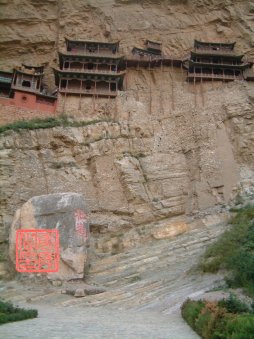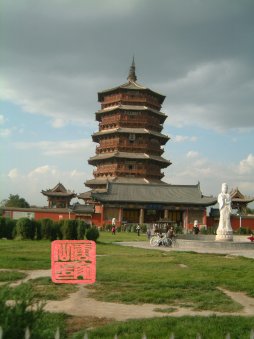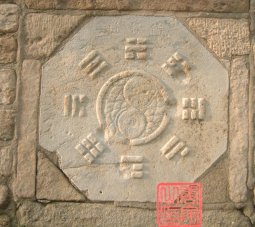|
Trip 2004 Shanxi According to some
legends,
Wanlang (the
tanglang quan founder) was a Taiyuan native, the present capital of
Shanxi province. Taiyuan is actually an
industrial city
with a modern architecture which dates essentially from XXth century.
This is in contrast with the ancient
city of Pingyao, which is located in the southern part of the
province and has been perfectly preserved. Thanks to the silver
trade, Pingyao was a rich and prosperous city. It remains so now
thanks to tourism, as the city is in the World Heritage List. In this
city there were also a lot of
escorting companies which were insuring the safety of fund conveys.
Therefore, it was also a major center for martial arts. Today, the city
shelters a museum of
martial arts and a second one describing the history of an escorting
company with a noteworthy series of portraits and biographies about
well-known martial artists who had worked as escort in Pingyao.
Of course, we have visited and
extensively filmed these two museums. 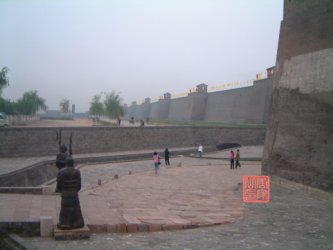 The walls of Pingyao In the north of Taiyuan,
we made a first halt at Wutaishan, one the 4 sacred mountains of
Chinese Buddhism.
A pilgrimage to Wutaishan consists in climbing the 5 peaks corresponding to the 4 cardinal points and to the center. The emperor Qianlong (Qing dynasty) visited the place several times. Wutaishan is the place where QixingTanglang quan’s famous master, Wang Yun Peng, became a monk after the death of his master, Kuai Shou Li ( fast hands Li ) and studied Shaolin Duanda and Qigong between years 1920 and 1923. Another character related to Tanglang quan retired and became monk in Mount Wutai. It was the fifth son of General Yang of Song Dynasty. During a battle which was taken place in the vicinity, he recognised the flag of his brother (the number 6 out of 7), and guessed that the latter was in trouble. It is said that armed with a staff he came down the mountain to help his brother and made victory change side. This is according to tradition the origin of the staff form Bagua Wulang Gun adopted by certain branchs of Tanglang quan.
On our way back to
Taiyuan, we stopped over at the octogonal wood pagoda , Yingxianta and
unravelled the oldest known representation (according to sinologist
C.despeux, an expert in the field), of the Taiji concept by two
kissing fish. The stone dates back to the 11th century and pictures a
primitive form of the Taiji in the course of the evolution that
led to the current spiral shape representation:
|

